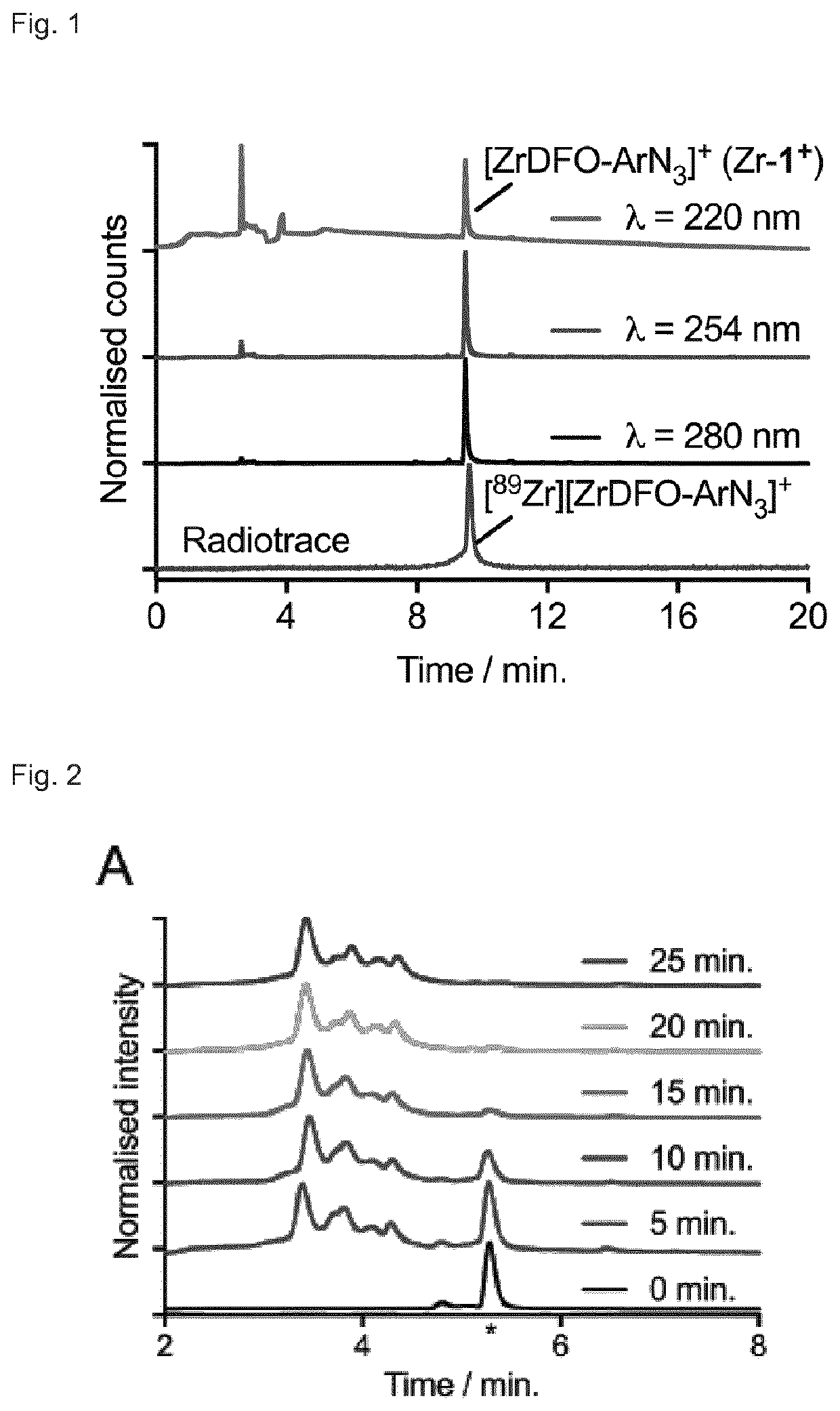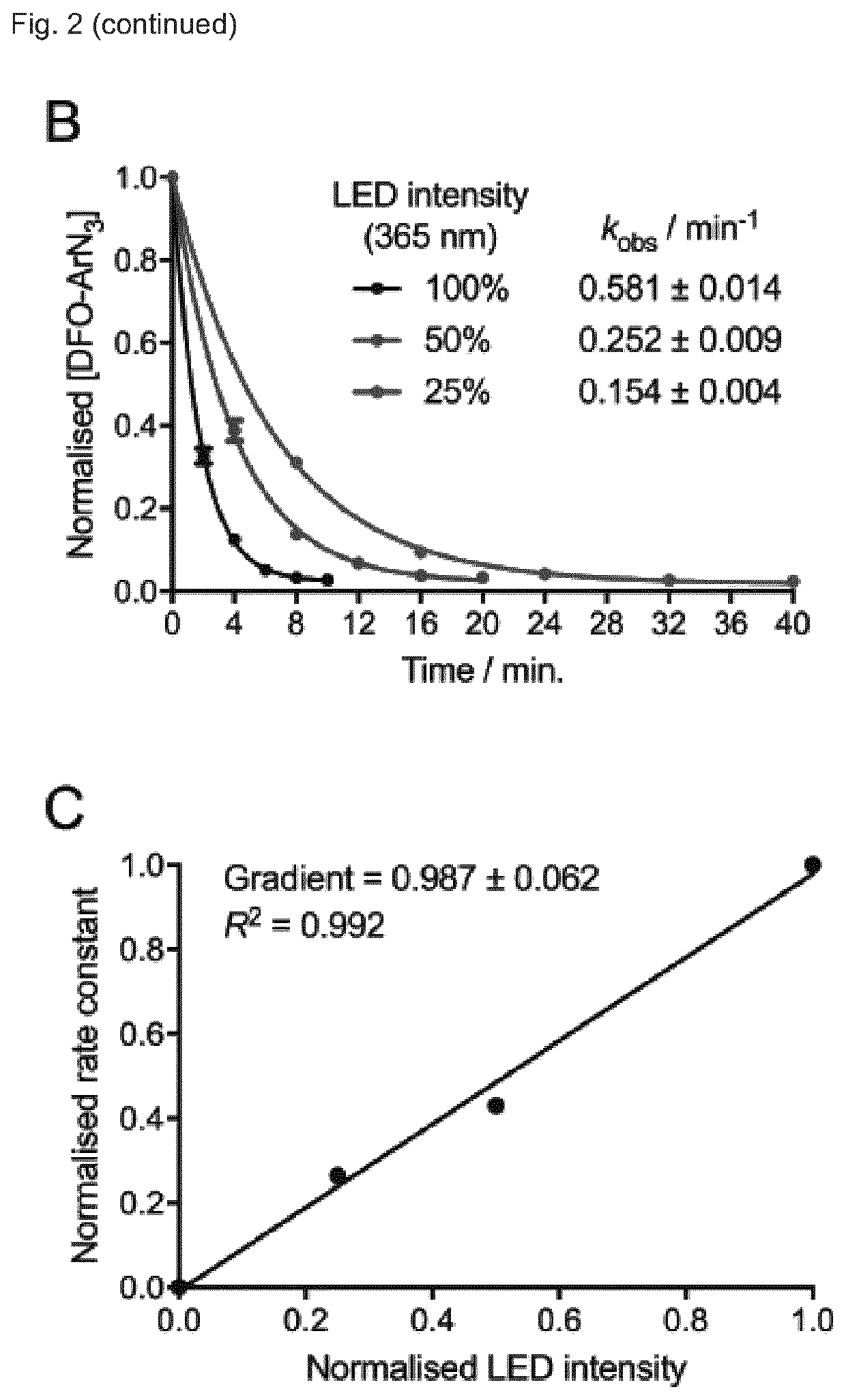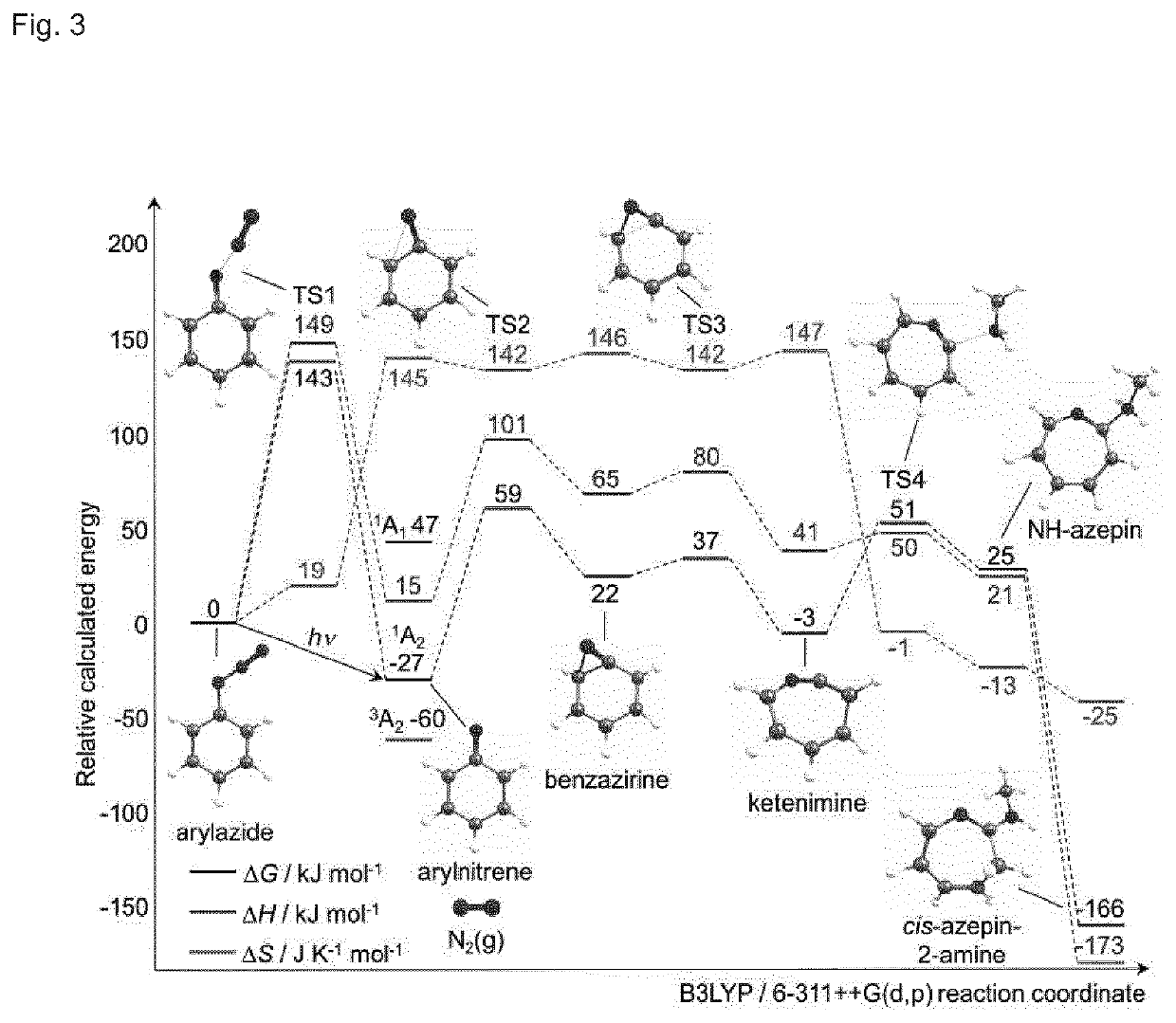Photochemically induced conjugation of radiometals to small molecules, peptides and nanoparticles in a simultaneous one-pot reaction
a radiometal and one-pot reaction technology, applied in the field of photochemically induced conjugation of radiometals to small molecules, peptides and nanoparticles in a simultaneous one-pot reaction, can solve the problems of compromising the biological integrity of the biomolecule, restricting the use of most pal tools, and time-consuming conjugation chemistry
- Summary
- Abstract
- Description
- Claims
- Application Information
AI Technical Summary
Benefits of technology
Problems solved by technology
Method used
Image
Examples
example 2
ous Photoradiolabelling of Antibodies
[0278]In proof-of-concept work, it was demonstrated that the photoradiochemical approach showed equivalent successful when radiolabelling either pre-purified fractions of monoclonal antibodies, or starting from fully formulated samples. Reactions were established in which [89Zr][Zr(C2O4]4−, and a monoclonal antibody (at an initial chelate-to-monoclonal antibody ratio of ˜29-to-1) were mixed in water and the pH adjusted to ˜8-9. Control reactions were also performed in the absence of either the chelate or the monoclonal antibody. Reactions were then stirred and irradiated using the LED source (365 nm or 395 nm) at room temperature for 10 min.
[0279]After irradiation, the mixtures were quenched by the addition of DTPA. Aliquots of the crude mixtures were retained and a fraction was purified by SEC-methods. Crude and purified samples were then analysed by using radio-iTLC, analytical PD-10-SEC and SEC-UHPLC methods (FIG. 7 and Table S3 below). Contro...
example 4
re-Radiolabelling Followed by Photoconjugation Using Two Different pH
[0286]The photoradiochemical reaction was tested further by using a one-pot approach. Compound 5 (NODAGA-PEG3-ArN3) was pre-radiolabelled with 68Ga, re-buffered to pH 8.0, and then prepurified monoclonal antibody was added and the mixture irradiated (FIG. 10). Analytical methods confirmed that one-pot preradiolabelling approach could be completed in 68Ga]GaNODAGA-azepin-antiboldy in sterile PBS with a decay corrected RCY of 33.9±0.7% (n=3). Development of this fast and efficient one-pot route simplifies the production of radiolabelled proteins by removing the need to synthesise under GMP conditions, then isolate and store the pre-functionalised intermediate. In addition, the one-pot route is suitable for automation using modular radiosynthesis units.
[0287]Finally, with a view to expanding the utility of photoradiochemistry, the one-pot approach was tested using a preparation of an antibody. Clinical preparations of...
PUM
| Property | Measurement | Unit |
|---|---|---|
| Volume | aaaaa | aaaaa |
| Acidity | aaaaa | aaaaa |
| Current | aaaaa | aaaaa |
Abstract
Description
Claims
Application Information
 Login to View More
Login to View More - R&D
- Intellectual Property
- Life Sciences
- Materials
- Tech Scout
- Unparalleled Data Quality
- Higher Quality Content
- 60% Fewer Hallucinations
Browse by: Latest US Patents, China's latest patents, Technical Efficacy Thesaurus, Application Domain, Technology Topic, Popular Technical Reports.
© 2025 PatSnap. All rights reserved.Legal|Privacy policy|Modern Slavery Act Transparency Statement|Sitemap|About US| Contact US: help@patsnap.com



